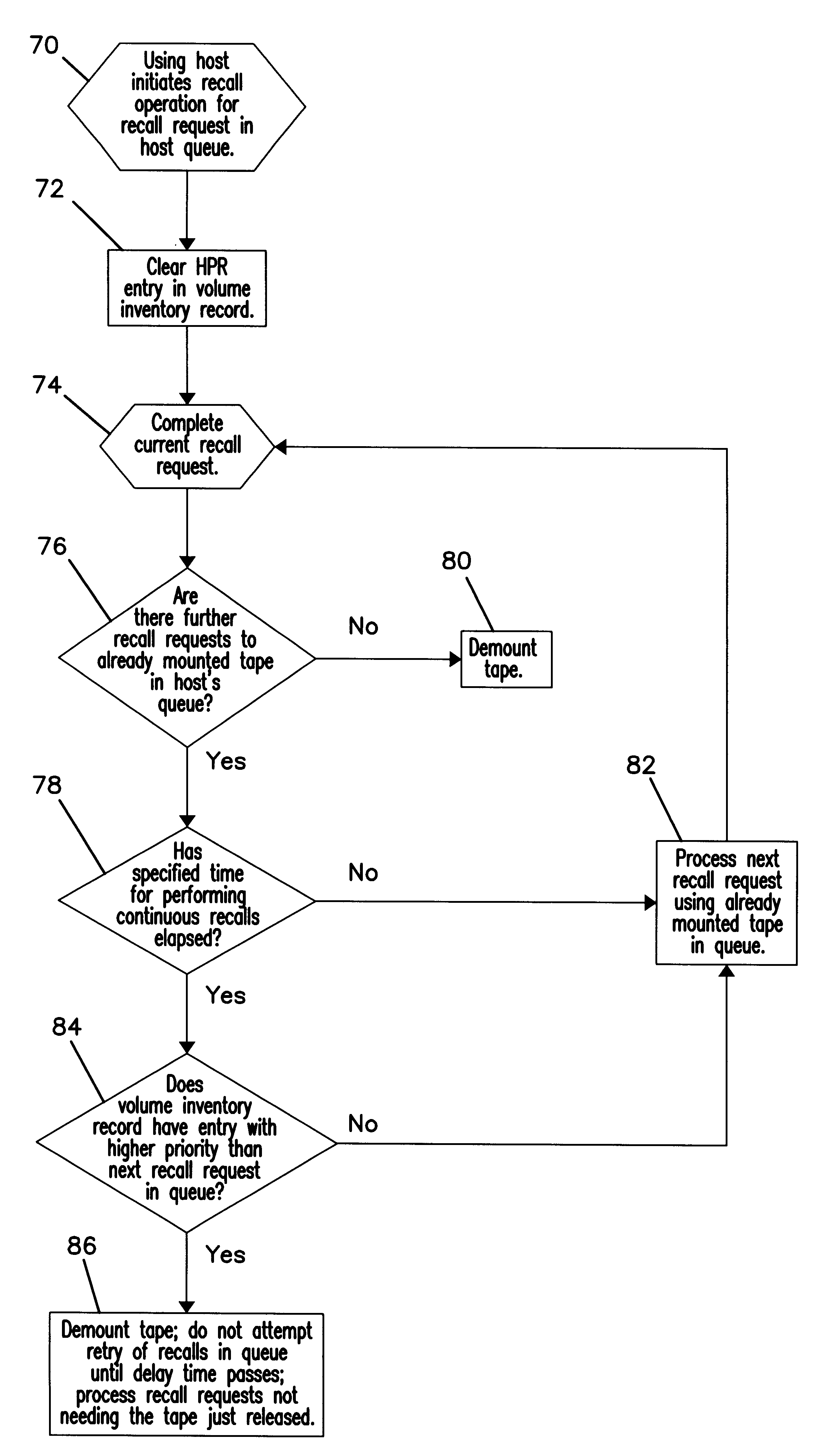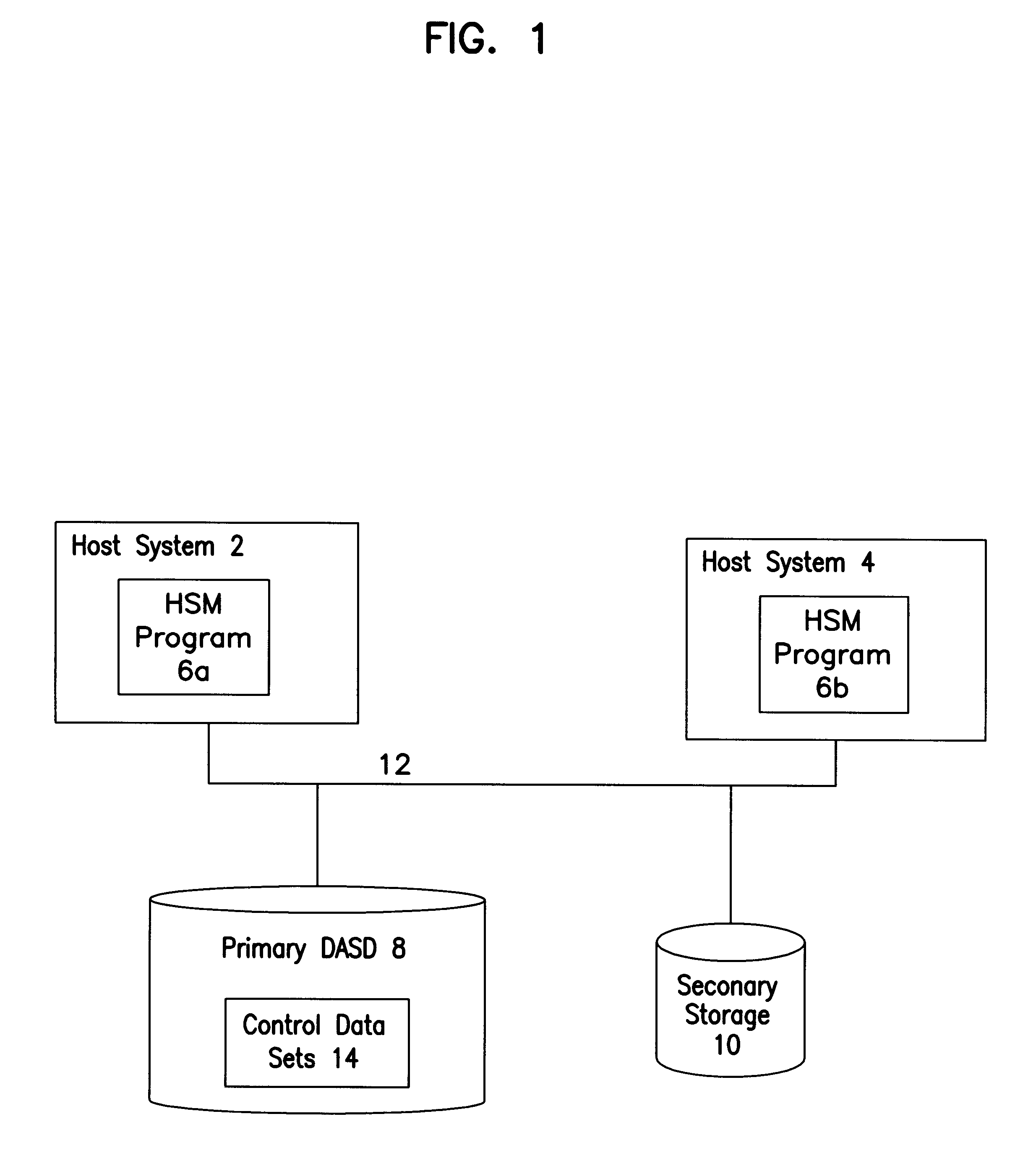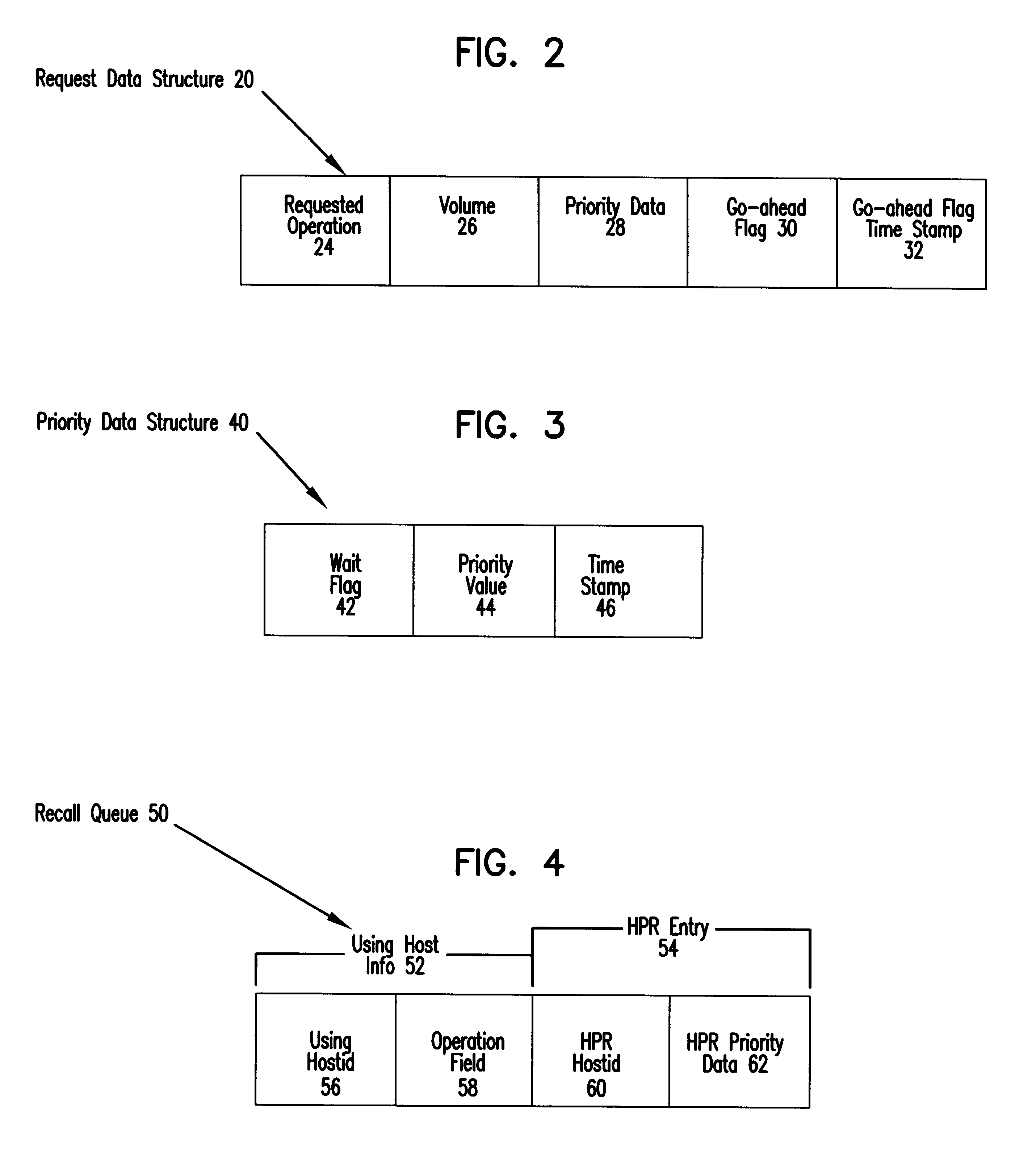System using priority data of a host recall request to determine whether to release non-volatile storage with another host before processing further recall requests
- Summary
- Abstract
- Description
- Claims
- Application Information
AI Technical Summary
Benefits of technology
Problems solved by technology
Method used
Image
Examples
Embodiment Construction
To overcome the limitations in the prior art described above, the present invention discloses a system for handling recall requests for data maintained in a storage device from multiple host systems. Initially, a storage device is allocated to a first host system to process recall requests in a recall queue including a plurality of recall requests. A second host recall request is initiated with a second host system to recall data from the storage device. The second host system determines whether the storage device is allocated to the first host system. If so, the second host system stores priority data in a data structure indicating a priority of the second host recall request after determining that the storage device is allocated to the first host system. The second host system retries the second host recall request at a later time. The first host system then releases the storage device before processing all the recall requests in the recall queue to make the storage device availab...
PUM
 Login to View More
Login to View More Abstract
Description
Claims
Application Information
 Login to View More
Login to View More - R&D
- Intellectual Property
- Life Sciences
- Materials
- Tech Scout
- Unparalleled Data Quality
- Higher Quality Content
- 60% Fewer Hallucinations
Browse by: Latest US Patents, China's latest patents, Technical Efficacy Thesaurus, Application Domain, Technology Topic, Popular Technical Reports.
© 2025 PatSnap. All rights reserved.Legal|Privacy policy|Modern Slavery Act Transparency Statement|Sitemap|About US| Contact US: help@patsnap.com



